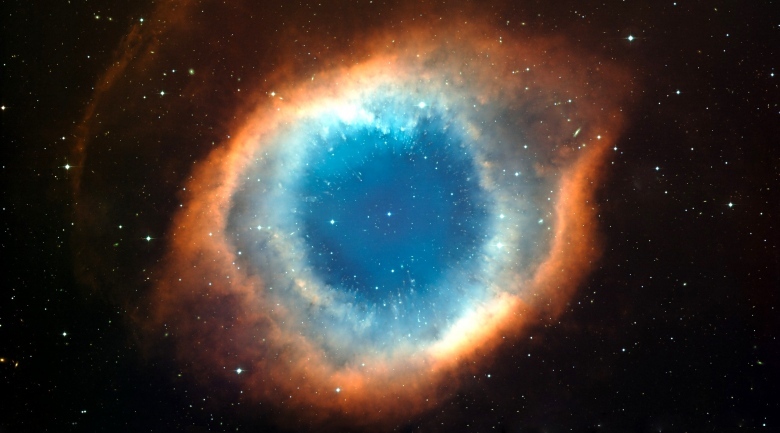
Astronomers have theorized that gas from the Big Bang spread out all across the Universe, creating a sort of “cosmic web” that flows between galaxies, connecting them. This gas, called the intergalactic medium (IGM), is a series of filaments that has crossed through the whole of space, from the time of the very first galaxies.
Recently, CalTech’s Cosmic Web Imager was able to map parts of this network, and also discovered a possible spiral galaxy in the making that’s three times larger than the Milky Way.
The gas of the IGM is also known as "dim matter." 96 percent of the mass of the universe is dark matter, and just one percent is stars and galaxies, while the remaining three percent is dim matter. Dim matter, being dim, is incredibly difficult to see, even with the most powerful telescopes.
We’ve only ever observed it before by studying the absorption of light between Earth and very bright objects like quasars (a quasar is the nucleus of a young galaxy). However, we only have limited information when studying the light between our planet and quasars: we know the dim matter is there, but we can’t see how it’s distributed.
The Cosmic Web Imager allows us to see more of the full picture. The telescope looked at the region between two bright objects in space: in this case, a quasar and a Lyman alpha blob (an area of hydrogen that shows up as bright light when exposed to a specific ultraviolet wavelength).
Both areas appear bright in images, making the filaments of the IGM stand out. The Imager saw one filament near the quasar that measured over one million light-years long. This filament probably is fueling the quasar’s galaxy. More importantly, three other filaments were seen flowing into the Lyman alpha blob in spirals and affecting it, signifying the possible birth of a new galaxy.
